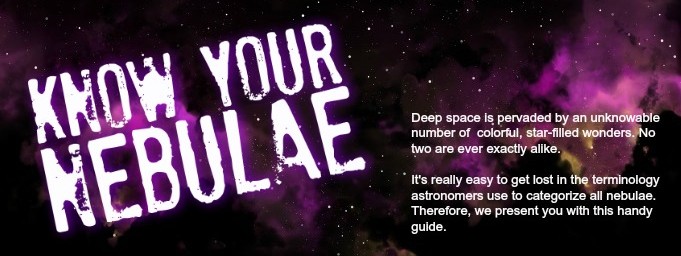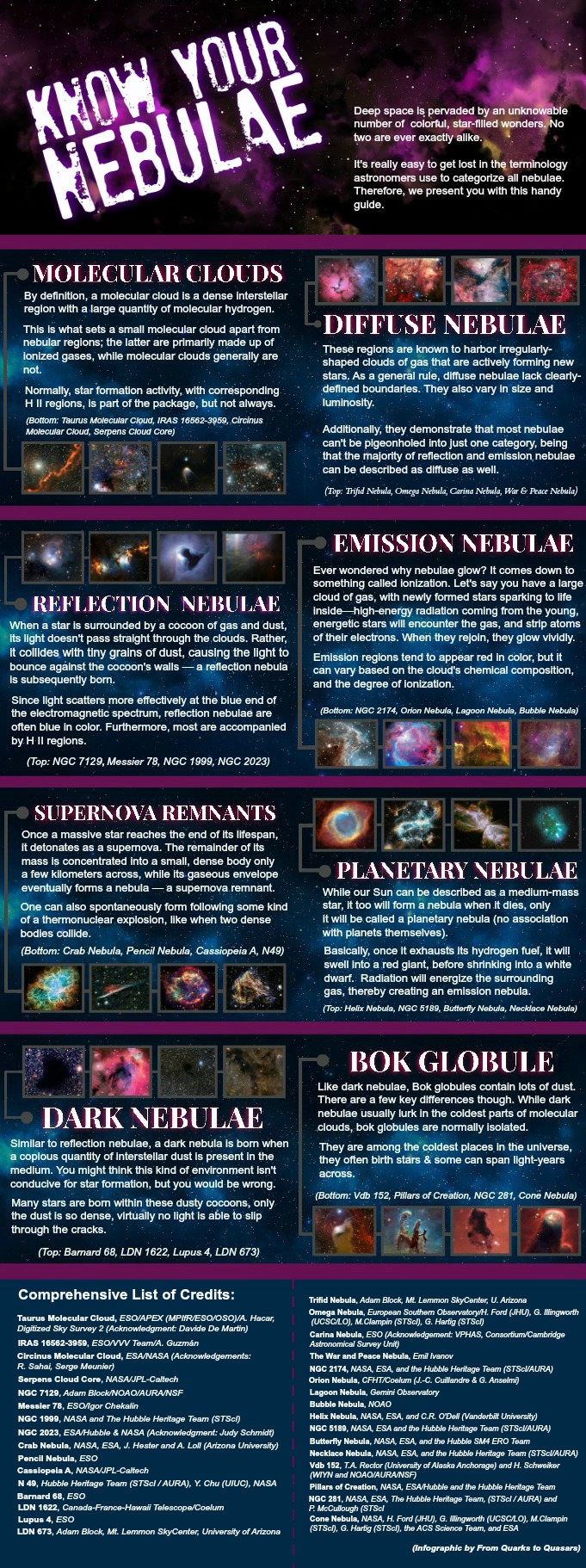
Through the years, the Hubble Space Telescope has beamed back many breathtaking images of the cosmos. So many, astronomers eventually had to come up with some way of grouping individual objects with similar characteristics together (though naturally, some characteristics overlap).
These days, there are six primary groups: planetary nebulae/supernova remnants, diffuse nebulae, reflection nebulae, emission nebulae, and dark nebulae. That might not sound like a lot, but it’s sometimes hard enough to determine which category a nebula belongs to, let alone keeping all of the classifications straight.
In our newest infographic (you can see a larger version here), we look at each individual type and a few subcategories (with examples).

SEE ALSO:
- Are Hubble Images True-to-Life Representations of Reality?
- 100 Planetary Nebulae: How Many Can You Name?
- Pareidolia: Clash of the Celestial Space Beasts
- What Does Space Actually Look Like?
- Real Spooky Nebulae
All images courtesy of Adam Block/Mount Lemmon SkyCenter/University of Arizona
Have an image you’d like to have featured by FQTQ? Contact us here.